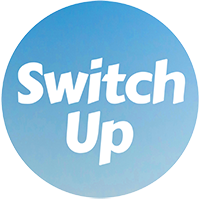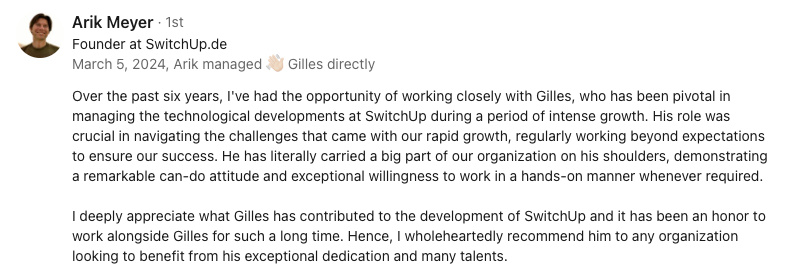Abstract:
The article explores the challenges and opportunities of transitioning to solo work, emphasizing that the absence of structured feedback and regular check-ins can lead to uncertainty and self-doubt in the first month. Drawing on personal experiences leading transformation projects in cities like Berlin, Shanghai, Paris, and Beijing, the author describes how losing external validation makes it easy to drift or focus on the wrong tasks. To counter this, the article introduces the concept of micro-milestones—small, specific achievements such as sending a first invoice, publishing a basic website, or even receiving a rejection email—which provide ongoing markers of progress and help maintain motivation. Backed by behavioral science, these “small wins” not only foster momentum and confidence but also help build new routines and cushion setbacks. The article offers practical advice on defining and tracking micro-milestones using frameworks like SMART goals, Kanban boards, or habit trackers—whether digital or analog—and highlights the value of weekly self-reviews, using simple reflection questions or models like GROW to adjust course without self-criticism. Celebrating micro-wins through personal rituals, such as a cup of tea or a walk outside, is shown to sustain energy and reinforce progress. Moreover, the article normalizes setbacks, suggesting that missed milestones serve as learning checkpoints rather than failures, and encourages shrinking goals to restore confidence. A sample 30-day plan breaks down the first month into achievable weekly steps, advocating for flexibility, frequent feedback, and regular celebration. Ultimately, the core message is that breaking solo work into micro-milestones and celebrating each small step creates clarity, control, and lasting momentum, turning the uncertainty of the first month into a period of meaningful growth.
The first month working on your own can feel both exciting and unsettling. Gone are the regular meetings, the reassuring check-ins, the quick feedback from a manager. Instead, you wake up to a blank slate and a silence that is a little too quiet. The pressure to keep moving is real, but the usual markers of progress are suddenly missing. While leading transformation plans in Berlin, those weekly checkpoints with my team kept us motivated and on course. Without them, it was easy to get lost in busywork or lose sight of what really mattered.
When you are suddenly solo, doubts creep in fast. Am I moving forward? Is this even working? The lack of feedback is not only emotional. It changes how you measure progress and how you keep momentum alive. In those first weeks, I saw that the only way to stay on track was to create my own feedback loop. Tiny, visible markers reminded me I was making headway.
If you feel the weight of uncertainty, you are not alone. You do not need huge wins to find your footing. Micro-milestones—those small, specific achievements—fill the gap and create a sense of progress and control even when big results feel far away.
The value of micro-milestones in your first month
Adjusting to solo work: finding your own feedback loop
Leaving the world of structured jobs behind is like stepping into a room that suddenly falls silent. No calendar full of meetings, no pings from managers, no end-of-day progress checks. The quiet feels freeing at first, then you start wondering if you are getting anywhere. Without external validation, small doubts echo and motivation slips.
This shift is more than an emotional tweak. It changes how you keep yourself on track. While leading transformation plans in Berlin, short feedback cycles made all the difference. Weekly checkpoints let us review what worked and what needed fixing. Without them, days vanished into the wrong problem or repetitive busywork. When you are solo, you must build your own feedback loop or risk drifting.
That is where micro-milestones help. These little markers replace the missing applause. Instead of waiting for a pat on the back, you create your own checkpoints. Each tiny concrete achievement says you are moving forward. It is not only about productivity. It is also about control and confidence, one small step at a time.
The science of small wins and why they work
Research backs up what I felt in practice. Visible progress on something meaningful keeps motivation high. Even tiny accomplishments, like sending the first invoice or publishing a basic website, turn a slow week into a productive one. Every small win creates momentum and shows that things are moving.
To make this less abstract, I started tracking the number of outreach emails I sent each week—yes, I made a little spreadsheet, old habits from physics die hard. In Berlin, I set a goal: five cold emails per week. Some weeks, I sent only three, but seeing the numbers tick up, even slowly, gave me a sense of movement. Like in physics, every small action has a reaction—each micro-milestone nudges you forward, even if you don't see it right away.
These minor milestones do more than just lift your mood. When I was launching in Beijing, I noticed that every time I finished a small task—like updating my website or getting a reply (even a No thanks)—it made the next step easier. Each completed step, no matter how tiny, proved to my brain that I could do it again. The next challenge felt lighter because I had proof I could finish what I started. Small rewards reinforce good habits, especially during big transitions.
Noticing and celebrating progress also cushions rough patches. Early in the launch of an e-commerce platform in Shanghai, progress crawled and setbacks arrived daily. Some weeks the only bright spot was one positive customer note. That tiny win made it easier to push through obstacles while bigger results were still out of reach.
Defining progress: micro-milestones in the first month
Micro-milestones are usually smaller than people expect. They are not about landing a huge client right away. Instead, progress might look like this:
- Submitting your first proposal, even if you think it will be rejected
- Sending your first invoice
- Receiving the first No thanks reply (oddly satisfying in its own way)
Setting up a basic website can feel huge. For me, a simple landing page explaining my work made everything real, more than any paperwork. That moment brought a strong sense of legitimacy and kept me moving.
Other examples stack up fast: sending a cold email, joining an awkward pitch call, or updating LinkedIn with your new status. Each small step is a brick in your independent foundation. Next, we break down how to map and track these milestones for steady progress.
Building your momentum map for the first month
Turning launch goals into clear micro-milestones
The first thirty days on your own can feel like staring at a mountain. You know you need the summit but the starting point feels fuzzy. Begin at the top. Ask what a successful first month looks like, then work backward.
When I launched a business unit in Beijing, backward planning turned a daunting project into five or six tangible steps and kept overwhelm away.
Most people overcomplicate the plan. Micro-milestones work best when they are simple and tied to your field. In the first month, that could be:
- Opening a business bank account
- Sending your first client pitch even if you feel nervous
- Publishing your website or service page
- Delivering your first paid piece of work
- Collecting initial feedback from a client or peer
Keep the list short. Every task should move you closer to momentum without drowning you in busywork.
Make steps even clearer with a framework like SMART. Swap do outreach for send three cold emails by Friday. Instead of get paid, set receive first client payment before month end. The more specific the milestone, the easier it is to spot progress and tick it off.
Making progress visible with simple tracking tools
It is easy to set milestones, but seeing movement along the path? That is another story. Visual tracking makes steps tangible. Dragging a sticky note from To Do to Done or marking off a habit tracker feels good—like a tiny victory parade, even if the only one watching is your cat. Kanban boards and simple habit charts keep motivation high.
Digital tools help if you like screens. Trello, Todoist, and Notion are popular for a reason. Notion works for me. I keep a roadmap in front of me and move each block to Done. With a drag-and-drop system, I am more likely to stick with it. No need to reinvent the wheel here.
Analog options still shine. I have taped hand-drawn charts next to my desk. Crossing each box feels better than any app. The method only needs to feel rewarding, not like extra homework. Sometimes, a little scribble on a post-it is enough to make you feel like a productivity genius (or at least, not a total disaster). With milestones mapped and a tracker in place, you are already halfway to a solid habit.
Picking the framework that fits you
No system is universal. Find one that matches how your brain works. If you love lists, SMART goals or the 12-Week Year may fit. Visual thinkers often prefer Kanban. Want to prepare for obstacles? Try WOOP, which stands for wish, outcome, obstacle, plan. Consistency matters more than picking the perfect tool. The simplest system you stick with beats the fancy one you abandon after two days.
Keeping it simple and personal has always helped me. During launches in Paris and Berlin, a mix of digital lists and a paper tracker kept everything tangible and stopped me from losing focus in the rush. Adapting the framework to my style gave me enough structure to move even when the to do list grew longer than expected. With your momentum map in place, regular self-checkpoints keep you on course.
Building powerful self-checkpoints
Weekly reviews as your anchor
The first weeks solo can feel unmoored. Right after leaving daily structure in Berlin, a weekly review became my anchor. I blocked Friday afternoon to look back and ensure I was not spinning my wheels. A simple ritual of thirty to sixty minutes, same time each week, gave my work clear rhythm.
Simple questions for effective reflection
A review should not turn into a slog. My checklist never changes:
- What did I finish?
- What did I learn?
- What tripped me up?
- What will I change next week?
The magic is in the habit, not the template. These questions help you learn fast and adjust without harsh self-criticism.
Honest learning, not self-blame
Reviews are about honest learning and picking priorities, a lesson that became clear while juggling projects across cities. Some weeks I missed the mark, but the review helped me spot patterns, reset, and try again.
Choosing quick self-assessment tools
Not every review needs a long debrief. When time is tight I ask only two things: What gave me energy this week? What drained me? These mini reflections, inspired by routines I liked in Berlin, make it easy to tweak my approach.
GROW for fast, focused reviews
GROW stands for Goal, Reality, Options, Way Forward. For a lightning review I jot down:
- What was my main goal this week?
- What actually happened?
- What could I try differently?
- What is my next step?
Even five minutes with this model keeps the focus on action instead of endless reflection.
Clarity in the chaos
Most weeks that brief pause is the only moment to see the bigger picture, especially when life gets busy. Self-checkpoints clear mental fog and give perspective. Celebrating even the tiniest win at the end of a week cements the habit and brings a quiet sense of progress. This week was not easy, but at least one thing is done, eh?
Celebrating small wins to keep momentum
Why progress rituals matter more than big outcomes
Waiting for major breakthroughs can make early weeks drag. Celebrating progress, even the tiniest step, gives a quick shot of energy. Studies show these sparks of satisfaction carry more motivational weight than distant finish lines. Progress deserves its moment every time.
Block by block, these personal rituals give solo work rhythm. If you hold out only for big wins, most days feel like a grind. A brief nod to progress can turn a week around.
After long sprints where results were slow, I started marking each step. Ticking off one milestone or pausing for a quiet walk after a taxing day made the process feel rewarding instead of like a treadmill. Over time these small rituals, especially a walk outside or a cup of tea, felt more satisfying than any big night out.
I still remember the first time a client paid an invoice—just a small project, but when the payment landed, it felt like winning the lottery, or at least like finding a forgotten ten-euro note in your winter coat. I made myself a coffee, sat by the window, and just let myself grin like an idiot for five minutes. That tiny moment carried me through a whole week of admin headaches.
Minimalist ways to mark micro-wins
No need for confetti. Simple actions work best:
- Add a checkmark to a wall chart or tracker
- Update progress in your app
- Send a quick message to a friend about a win
- Step outside for fresh air
- Write one line in a notebook
Apps with tiny animations can boost mood, yet old-school options often feel more grounding. When I launched my first product in China, my victory dance was a quiet cup of tea and a short journal entry. Nobody else saw it. That moment still meant the world.
Consistency matters. The celebration only needs to be easy and true to you. Regular small acknowledgments keep momentum alive even when wins look minor.
Navigating setbacks and missed milestones
Missing the mark and moving forward
It is easy to think you are the only one missing targets in month one, but everyone does. Most new independents underestimate how long it takes to find clients or sort paperwork. And waiting for the first invoice to be paid? That can feel like watching paint dry, except the paint is your rent money. When I first handled my own admin overload, the learning curve felt steep. If you miss a deadline, it is part of the path. What matters is how you bounce back.
Instead of sinking into guilt, pause and ask what tripped you up. Was the milestone realistic? Did priorities shift? Reviewing events without blame helps more than frustration. A few questions guide me:
- What blocked my progress?
- Was this the right priority?
- Which distractions stole focus?
If you fall behind, shrink the next goal. Do not jump straight to land a client. Aim to send two proposals. Micro-wins restore confidence fast. Every setback offers data to learn and improve.
Turning setbacks into learning checkpoints
Treat stumbles as checkpoints, not full stops. Shift the question from Why did I fail to What can I learn here? I usually ask:
- What did not go as planned?
- What can I change for next week?
Talking with someone else, even a quick chat, makes this easier. When building teams in Beijing or Berlin, a colleague’s perspective sparked new ideas and eased the isolation. Honest check-ins made the next step clearer.
A 30-day momentum map for your first month solo
Week-by-week micro-milestones for real progress
The first month alone mixes excitement and uncertainty, but breaking it down week by week makes it concrete.
Week one covers practical basics. Register the business if needed, open a bank account, outline your offer, and draft the first outreach email. Each task gets ticked off, and I pause a minute to acknowledge it. Early wins, even administrative, chip away at anxiety.
Week two is about visibility. Tasks often look like:
- Publish a basic website or one-page portfolio
- Send three client proposals or intro emails
- Schedule at least one call, awkward or not
A quick review at the end asks what felt natural and what felt rough. Tweaking the pitch pays off the following week.
Week three feels more tangible. Deliver a first small project, consultation, or pilot. I update the tracker and celebrate with a walk or favorite snack. Delivering real value, even unpaid, shifts the work from planning to actual business.
Week four circles back. Follow up with every lead, refine your process, and run a final review. I open the tracker and ask:
- Which milestones are done?
- What rolls into next month?
- Which tasks sparked energy?
Insights shape the next plan. Maybe I spent too long on setup or avoided outreach. Each note feeds back into the cycle.
No plan fits everyone, so adjust speed, context, and energy. The core idea stays the same. Keep loops short and celebrations frequent. Flexibility and regular feedback make the approach serve you, not the other way around.
Your first month solo can feel thrilling and overwhelming at once. Breaking it into micro-milestones keeps it light and achievable. Small wins tracked with simple tools and honest weekly reviews build true momentum even when progress seems slow. Tangible steps give clarity, while celebrating each one lifts energy and sends doubts packing. When setbacks arrive, treat them as learning checkpoints. The magic comes from making your own feedback loop and finding joy in each small step forward.














